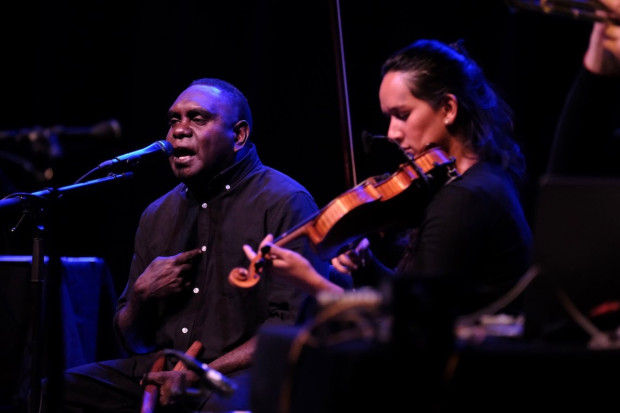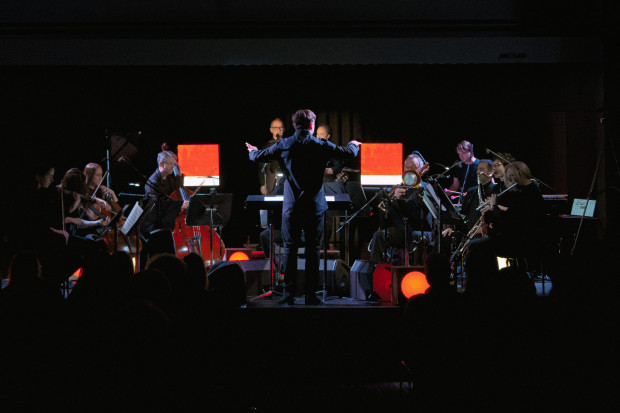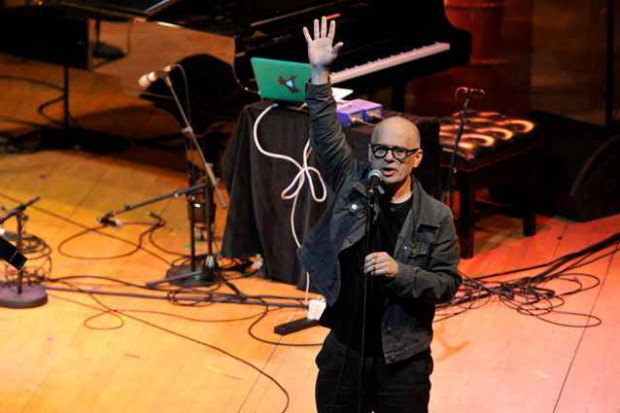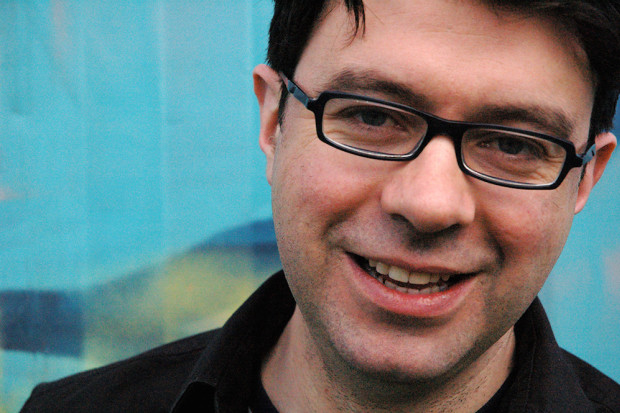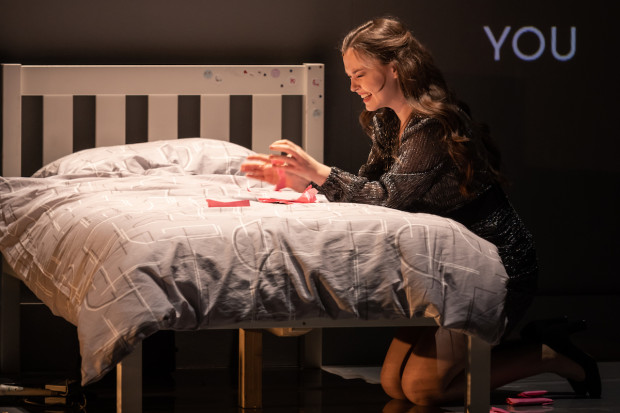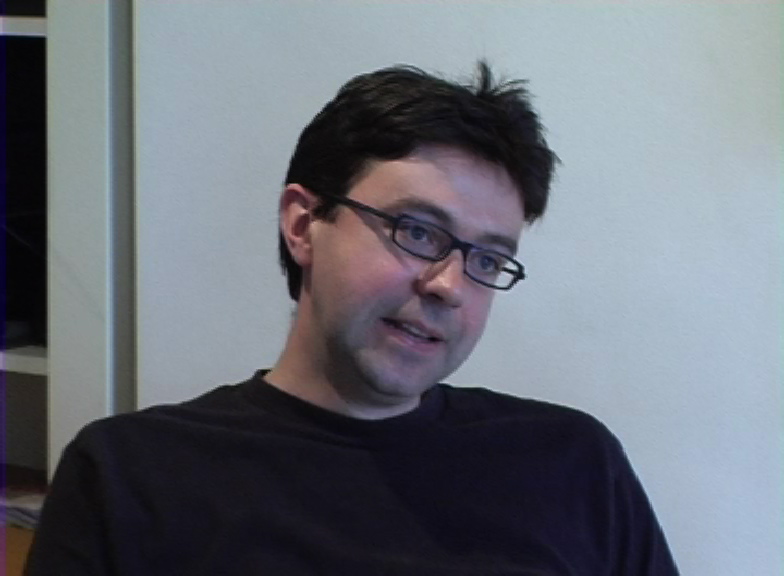
Donnacha Dennehy
Live Review: Up North! Contemporánea
Contemporánea, Project– Space Upstairs, December 2002.
Barrett – Liquid Crystal (2000); Alcorn – Crossing the Threshold (2001); Dennehy – Glamour Sleeper (2002); Nordin – calm like a bomb (2000); Siegel – Guernica; Pohjannoro – an island, shoreless (1994); Kanding – gaukler (2001)
Contemporánea is a six-piece group from Denmark that combines electro-acoustic, acoustic and video elements. Their forces are computers/tape, video, violin, double bass, clarinet and percussion. The central idea is that the instruments provide blown, strung and beaten instruments; the ‘three original types of acoustic sound production.’ This gives their sound-world a wider range than might initially be expected from such limited numbers.
Two aspects were unusual about this concert: the absence of any interval break (though there was around 90 minutes’ music), and the fact that there was continuous sound and video throughout the concert. The intention appeared to be to wind up the audience’s concentration. It was achieved by the crude means of imposing between the pieces annoying loops of electronic blips and scratches not unlike the sound of a dirty vinyl record hiccupping between tracks. Some thought had gone into this however, as the types of sound chosen seemed to contrast with the general qualities of the preceding piece.
Video throughout this concert usually failed to relate meaningfully to the sounds, and certainly made no attempt to either counterpoint or partake of the music’s rhythm, except occasionally when there was a sense of sectional changes coinciding. Apart from this, the quality of the video was underwhelming as visual art either in concept or visual resolution and visibility.
Natasha Barrett’s piece was for solo clarinet and live electronics. Although extreme in its demands on the listener, it was not laden with extended techniques in the clarinet part. This was an evocative piece that kept a lot in reserve. The electronic element was also not ‘extending’ itself, but rather serving the vision of the piece.
Michael Alcorn did not receive a very faithful performance here; it was thinner and less active than this piece has been in previous performances. Nevertheless once it got going (which took longer than it normally does) there was a worthwhile sense of dialogue between the melodic solo violin part and the more intangible computer part.
Donnacha Dennehy’s work was a premiere, specially commissioned for this festival. Made out of highly unsubtle sound production – lots of dirty scratching from strings and hard edged percussion – and limited, even crude pitch resources, this all had the virtue of making the argument very easy to follow (in contrast to most of the programme). The organising principles governing everything else were the opposite, refined and tasteful. The simple video (that might have starred Dublin’s architectural gem ‘canary dwarf’) was among the best matched to the music.
Jesper Norden’s piece for violin solo, video and electronics packed the punch promised in its title. It was outwardly calm, but gravely, and at times heavily, expressive. The video here had emotional content that worked with the music. Towards the end the emotional charge of the music grew to an extreme, without cheapening itself.
Wayne Siegel gave us a piece whose stated subject is genocide and conflagration, but in fact because of its stylistic resonances with sentimental jazz and klezmer music and its often soft heart (it was the most accessible piece) it functioned as the light relief in the programme. The electronic sounds were very effective transformations of the acoustic parts. Formally the piece took a few crude turns back on itself to effect an ending.
Hannu Pohjannoro’s piece for bass clarinet and electronics with video had an immediately likeable tape part that gesturally and acoustically counterpointed the clarinet part. The whole organisation was contrapuntal with several clearly defined strands working their own logic while blending and cutting back together to provide meaningful discourse. An unsubtle and repetitive video detracted from this.
Ejnar Kanding writes music that eschews all musical logic. There is not much sense of the parts working together or sharing any concerns metaphorical or material. But in this context overall changes of energy and density can come as little miracles, as tension and its release are the only things left. His piece used all the players; its accompanying video featuring a writhing dancer with occasional snake was a talking point after the concert.
Published on 1 January 2003
John McLachlan is a composer and member of Aosdána. www.johnmclachlan.org













